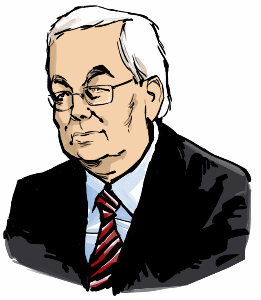Gunnar Tómasson
14 December 2014.
Introduction
The mystery of the Shakespeare Authorship Question – whose existence has been denied by academics whose intellectual investment is at stake – appears to be blatantly flaunted on the title page of the First Folio of Shakespeare’s plays.
The following is a succinct explanation of the circumstances thereof which is posted at http://www.william-shakespeare.info/william-shakespeare-droeshout-engraving.htm.
The Martin Droeshout Engraving – William Shakespeare First Folio
The “First Folio” is of major importance to William Shakespeare as it is the first collected edition of Shakespeare’s plays. The copper-engraving picture of William Shakespeare is signed Martin Droeshout on the title-page of the ‘First Folio’ (1623). It can be confidently attributed to Droeshout. It must be remembered that during Shakespeare’s era that only engravings could be used to illustrate such documents, it was not possible to reproduce paintings of portraits.
The famous picture engraving, prefixed to the First Folio of Shakespeare plays, is said to contain many strange clues as to the possible authorship of its content – often referred to in the web of intrigue surrounding the mystery of William Shakespeare as the ‘Identity Problem’.
The Engraving Picture
Before you read any further take a good, hard look at the picture of the engraving at the top of the page. And form an honest opinion of the engraving…
Opinions
Many opinions have been expressed about the copper engraving picture – and they are far from complimentary. “Ludicrous” and “Monstrous” are some terms that have been consistently applied. Sam Schoenbaum the author of Shakespeare’s Lives, wrote the following:
“…a huge head, placed against a starched ruff, surmounts an absurdly small tunic with oversized shoulder-wings… Light comes from several directions simultaneously: it falls on the bulbous protuberance of forehead … that ‘horrible hydrocephalous development’, as it has been called … creates an odd crescent under the right eye…” Sam Schoenbaum
“A hard, wooden, staring thing.” – Richard Grant White
“Even in its best state, it is such a monstrosity that, I for one, do not believe that it has any trustworthy exemplar.” – C. M. Ingleby
“The face is long and the forehead high; the one ear which is visible is shapeless; the top of the head is bald, but the hair falls in abundance over the ears.” – Sir Sidney Lee
Well, at first glance one cannot help but agree! So what on earth was Martin Droeshout the engraver thinking of? Surely such an illustration, on an important 900 page document, commissioned by the powerful Pembroke family would have been immediately rejected as quite grotesque? Why did they choose Droeshout as the engraver? Would they really have entrusted such an important task to a raw apprentice, apparently incompetent, with no talent and no sense of proportion or perspective?
Comment
In the First Folio, the title page which contains the Droeshout engraving is preceded on the opposite page by Ben Jonson’s brief introductory poem. Application of the Saga-Shakespeare Cipher Key to the poem is suggestive of a solution of a key part of the mystery – the link between the Saga literature of 13th century Iceland and the Shakespeare literature of Elizabethan England.
***
I. Ben Jonson’s introductory poem
(First folio, 1623)
5506 = To the Reader.
18235 = This Figure, that thou here seest put,
16030 = It was for gentle Shakespeare cut;
13614 = Wherein the Graver had a strife
15814 = with Nature, to out-doo the life:
16422 = O, could he but have drawne his wit
13172 = As well in brasse, as he hath hit
19454 = His face; the Print would then surpasse
16560 = All that was ever writ in brasse.
13299 = But, since he cannot, Reader, looke
15354 = Not on his Picture, but his Booke.
541 = B. I.
164001
Snorri Sturluson is identified as author of Edda in a curious version of the work known as Uppsala-Edda. I personally wrote the text below from a photocopy of the original manuscript. The text, not unlike the Droushout engraving, is mangled in respect of both spelling and individual words. Modern versions of this important text have been cleaned up, but in the process the Cipher Value of the original is lost.
II. Snorri Sturluson’s Booke
Uppsala-Edda
8542 = Bók þessi heitir Edda.
20156 = Hana hevir saman setta Snorri Sturlo son
15735 = eptir þeim hætti, sem hér er skipat.
10539 = Er fyrst frá ásum ok Ymi
18224 = þar næst skalldskap ok heiti margra hluta.
17723 = Síþaz Hatta tal er Snorri hevir ort
13512 = um Hak Konung ok Skula hertug.
104431
Mörðr gígja – Mördr fiddle – is met with in the first few words of Brennu-Njálssaga, where he is said to be “a rich chieftain … and such great lawman that no court rulings were considered lawful unless he was present”. A few chapters later, Mörðr gígja passes away and is greatly mourned.
As here construed, Mörðr gígja is Cosmic Law personified. In the imagery of myth, his “passing” is one with that of Cosmic Law become Flaming Sword, whose constant Cipher Value is 4000. In the context of ancient creation myth, such “passing” leaves a “booke” – Man – “perfected”.
III. Snorri Sturluson as “Booke” Perfected
My construction
11359 = Snorri Sturluson
4000 = Flaming Sword
4642 = Mörðr gígja
20001
IV. ‘Gentle Shakespeare‘ – In Memoriam
Holy Trinity Church, Stratford-upon-Avon
19365 = IUDICIO PYLIUM, GENIO SOCRATEM, ARTE MARONEM
20204 = TERRA TEGIT, POPULUS MÆRET, OLYMPUS HABET
39569
With the judgment of Nestor, the genius of Socrates, the art of Virgil,
Earth covers him, the people mourn him, Olympus has him.
II + III + IV = 104431 + 20001 + 39569 = 164001.
***
A calculator which converts letters into cipher values is at:
http://www.light-of-truth.com/ciphersaga.htm

 Gunnar Tómasson
Gunnar Tómasson